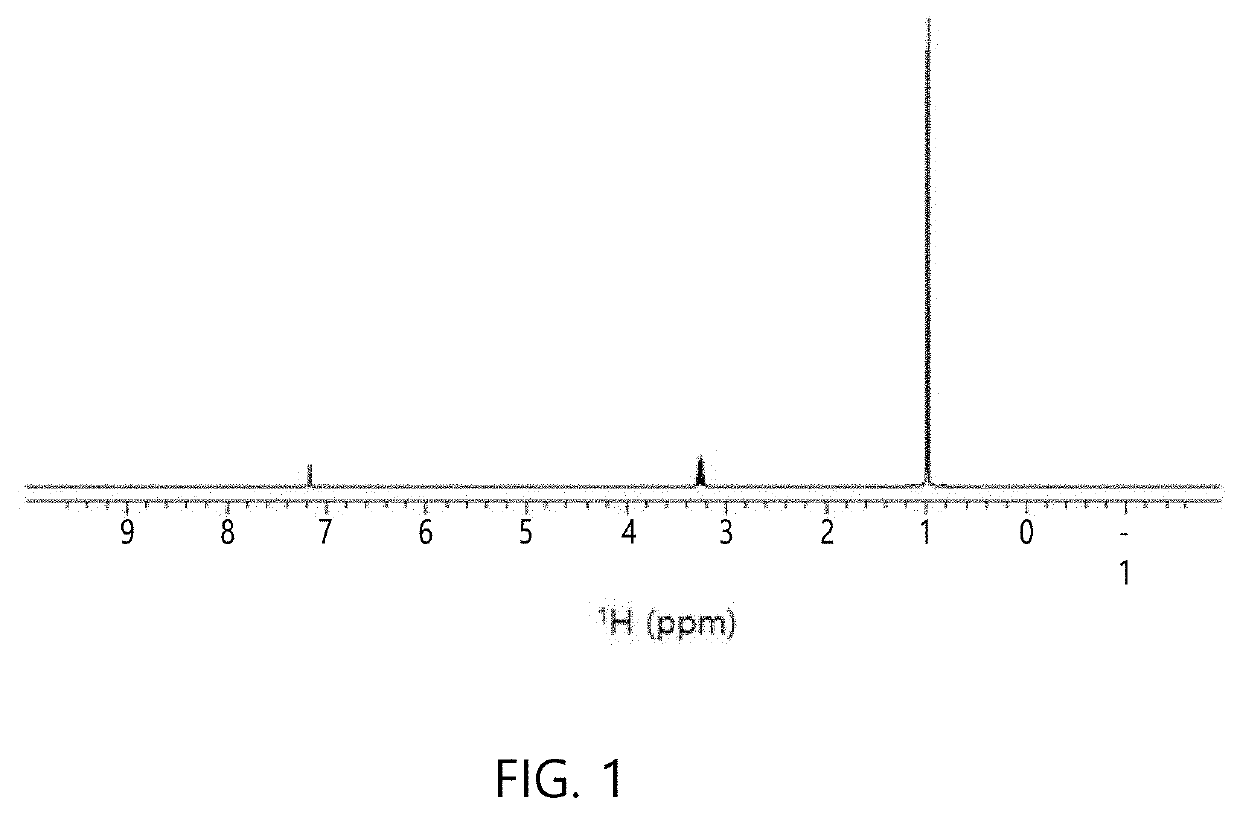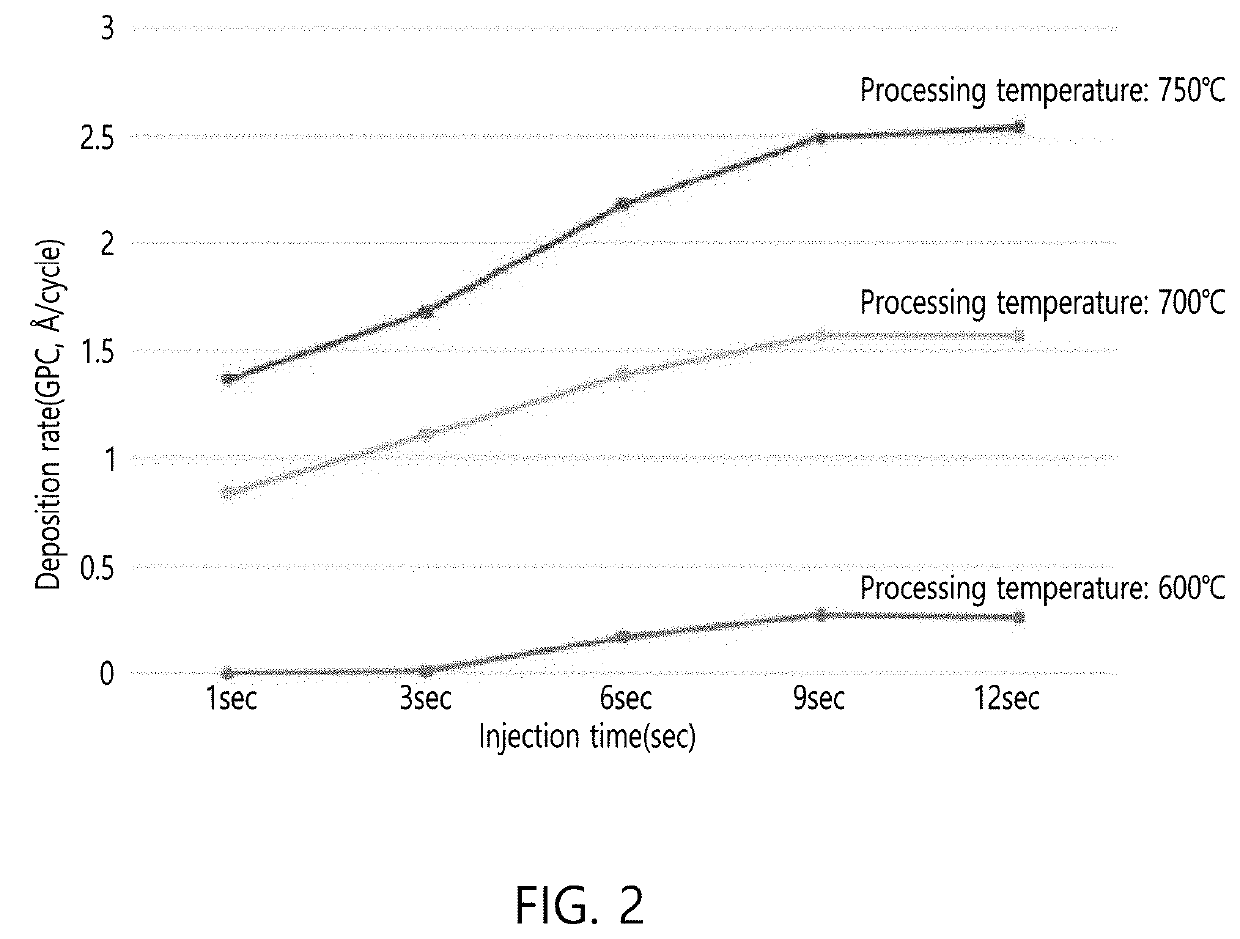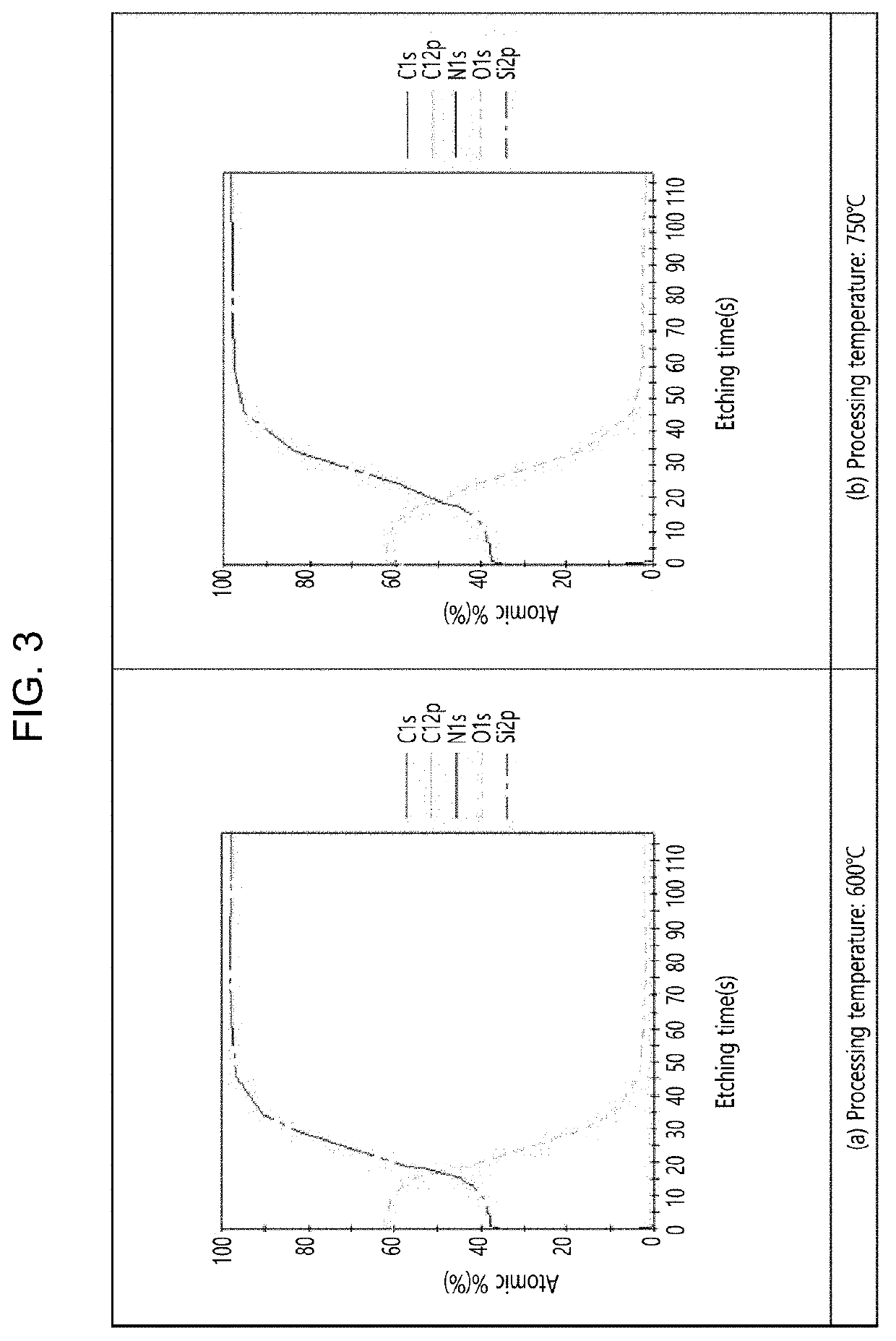Silicon precursor and method of fabricating silicon-containing thin film using the same
- Summary
- Abstract
- Description
- Claims
- Application Information
AI Technical Summary
Benefits of technology
Problems solved by technology
Method used
Image
Examples
Example
EXAMPLE 1
Production of Diisopropylaminotrichlorosilane (C6H14Cl3NSi)
[0046]SiCl4 (1.0 eq.) was placed in a flask, diluted in pentane (12 eq.), and then cooled in a water bath maintained at 0° C. While the resulting solution was stirred, diisopropylamine (2.87 eq.) diluted in pentane (6 eq.) was added slowly to the solution. After completion of the addition, the mixture was stirred at room temperature for 15 hours. After completion of the reaction, the reaction mixture was filtered, and the filtrate solution was boiled at atmospheric pressure to remove the solvent. The obtained liquid was purified under reduced pressure to obtain a colorless transparent liquid.
[0047]A reaction scheme for synthesis of diisopropylaminotrichlorosilane and the chemical structure of diisopropylaminotrichlorosilane are shown in the following Reaction Scheme and Chemical Structural Formula, and the chemical structure of diisopropylaminotrichlorosilane was verified by 1H-NMR as shown in FIG. 1.
[0048]In additi...
Example
[0063][Experimental Example 1] Analysis of Composition of Silicon Oxide Film (SiO2) Fabricated from Precursor of Example 1
[0064]The compositions of the silicon oxide films fabricated by depositing the precursor of Example 1 and the mixture of oxygen and hydrogen (H2+O2) at process temperatures of 600° C. and 750° C., respectively, were analyzed by XPS analysis, and the results of the analysis are shown in FIG. 3.
[0065]As shown in FIG. 3, from the results of XPS analysis of all the thin films fabricated at process temperatures of 600° C. (FIG. 3a) and 750° C. (FIG. 3b), it could be confirmed that impurities such as carbon (C), chlorine (Cl) and nitrogen (N) were not detected, suggesting that the formed silicon thin films had excellent quality without containing impurities.
Example
[0066][Experimental Example 2] Surface Characteristics of Silicon Oxide Film (SiO2) Fabricated from Precursor of Example 1
[0067]The surface roughnesses (Ra) of the silicon oxide films fabricated by depositing the precursor of Example 1 and the mixture of oxygen and hydrogen (H2+O2) at process temperatures of 600° C. and 750° C., respectively, were measured by observation using atomic force microscopy (AFM) and scanning electron microscopy (SEM), and the results of the measurement are shown in FIG. 4.
[0068]As shown in FIG. 4, the surface roughnesses (Ra) were measured to range from 0.097 nm to 0.134 nm, indicating that the silicon oxide films all had low roughness (1.5 Å or less). In addition, it could be confirmed that the roughness increased as the process temperature increased (FIG. 4a (process temperature: 600° C., and Ra: 0.097 nm) and FIG. 4b (process temperature: 750° C., and Ra: 0.134 nm)).
[0069]This low surface roughness could also be confirmed by SEM.
PUM
| Property | Measurement | Unit |
|---|---|---|
| Temperature | aaaaa | aaaaa |
| Density | aaaaa | aaaaa |
| Surface roughness | aaaaa | aaaaa |
Abstract
Description
Claims
Application Information
 Login to View More
Login to View More - R&D
- Intellectual Property
- Life Sciences
- Materials
- Tech Scout
- Unparalleled Data Quality
- Higher Quality Content
- 60% Fewer Hallucinations
Browse by: Latest US Patents, China's latest patents, Technical Efficacy Thesaurus, Application Domain, Technology Topic, Popular Technical Reports.
© 2025 PatSnap. All rights reserved.Legal|Privacy policy|Modern Slavery Act Transparency Statement|Sitemap|About US| Contact US: help@patsnap.com



